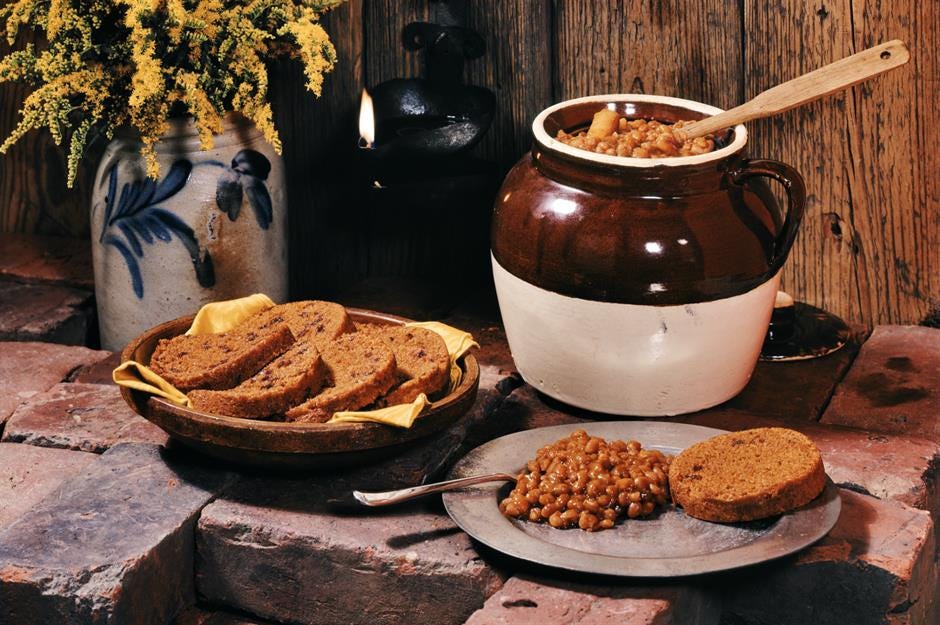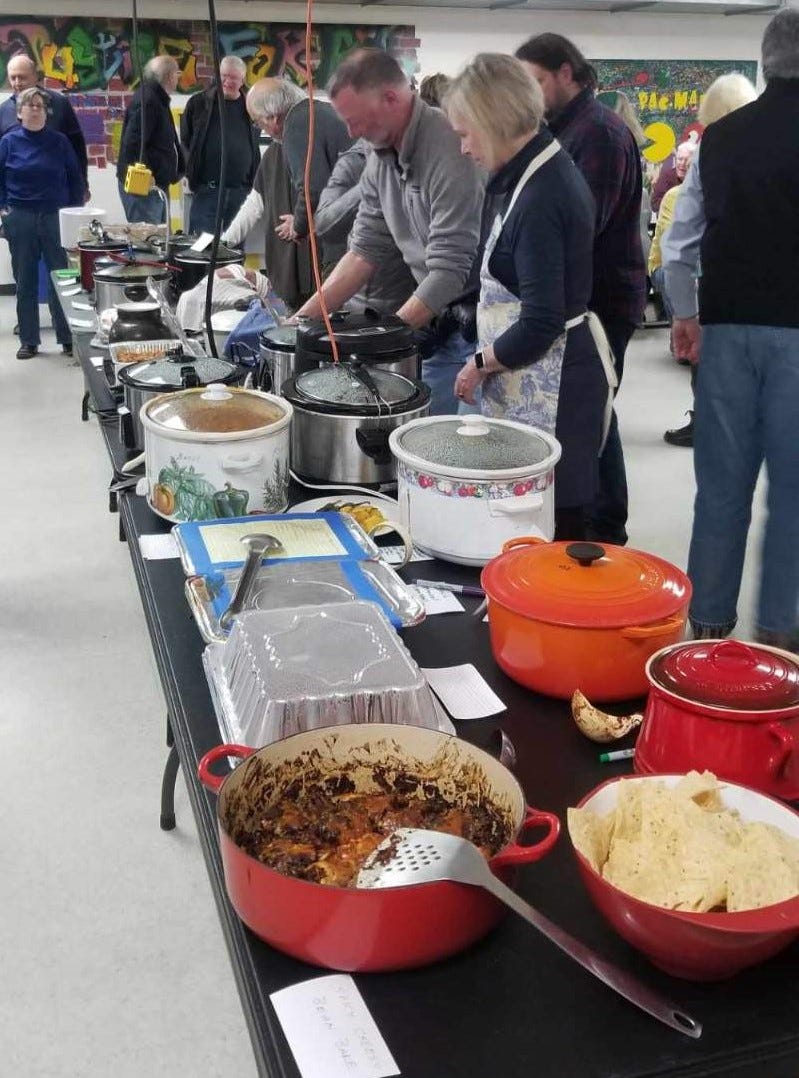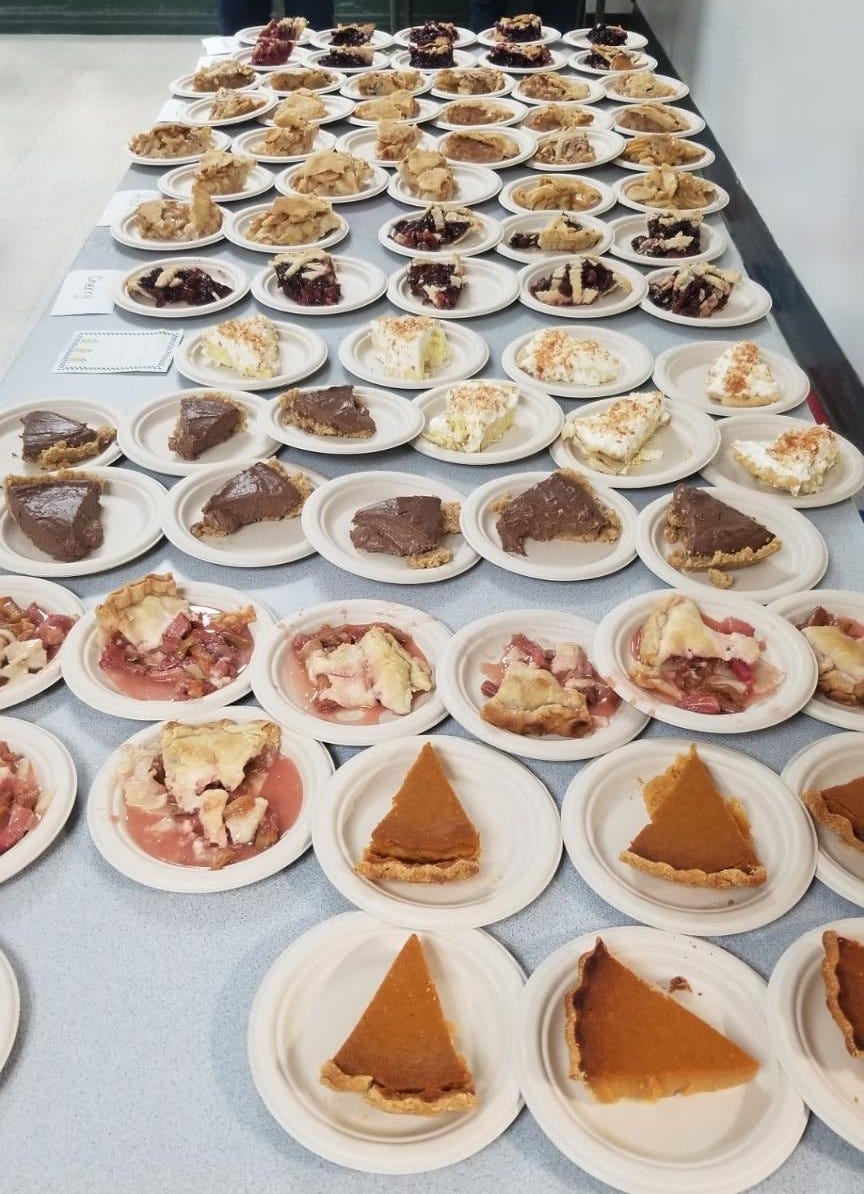This post was contributed by Bill Horner and the MDI Historical Society.
BAR HARBOR—Of the many traditions and rituals of growing up in Maine, perhaps that which for me attains the highest level of sublimity is Baked-Bean Saturday and its fine public manifestation, the baked bean supper. Mind you, I did not say “dinner,” but rather “supper,” or more properly “suppah.”
I am not alone in this assessment. Fellow Maine native and Bowdoin professor Robert P. Tristam Coffin in Mainstays of Maine said, “That cornerstone of New England’s civic serenity and domestic righteousness, called Baked-Bean Saturday, begins a long time before the last day of the week. Oh, a long, long ways!”
Even Kenneth Roberts, born uncomfortably close to Massachusetts, but a Maine man nonetheless, waxed reminiscent in the Grandma’s Kitchen chapter of his Trending Into Maine: “Thursday nights were big nights for the young fry in Grandmother’s house, because that was the night for boiled dinner, but the biggest night of all was Saturday night. The rich scent of cooking had percolated through the house all day, and above all the other scents had risen the meaty, fruity, steamy odor of baked beans.”
Growing up in Bar Harbor of the 1950s, my winter Saturday nights actually began 24 hours earlier. My grandfather lived on Wayman Lane, kitty-corner from the hospital. After Friday school got out, I would head over to his house, (or perhaps I should say his kitchen laboratory) for this was where the great and delicate process got underway. I remember the kitchen always being warm, even during the coldest January nights. This was due to a big copper hot water tank that stood between the refrigerator and the stove. The stove was partly electric and, more importantly, oil-fired. This second feature heated the coil to the hot water tank and partially heated the well in the back of the stove. It was this feature, the well, indeed the wellspring of all things delicious and memorable, in which the carefully prepared legumes and accompaniments would slowly mix and distill and cook into the final ambrosia of Saturday night beans.
It is difficult to imagine more closely held opinions than those pertaining to bean selection, pre-cooking preparation, cooking additives, and cooking duration. The commonly agreed upon elements of this persistent debate are to start with dried beans, soak overnight, parboil, and cook slowly for six or eight hours. Beyond that, it is difficult to find any agreement.
Perhaps the liveliest argument starts at the very beginning: which bean should one use? It must have been grown in Maine, to pass through the rigors of our thin Maine soil or, as Brother Coffin says, “They must have the benefit of a New England education…a California pea-bean needs to be redeemed and rededicated….”
This reverential attitude is reinforced by the passion with which people proclaim their preferences. The pea bean, for example, never entered my grandfather’s kitchen. While an occasional red kidney or yellow eye may have made it to the well, the hands-down favorite was the lordly if not biblical, Jacob’s cattle. It was, in essence, the ONLY bean. Indeed, Jacob’s cattle is a beautiful bean to behold, with its white purity and vivid maroon splashes. It is said to be full-flavored, to hold its shape under long cooking, and to stand up well to plenty of seasoning. The Jacob cattle is our family bean to this day.
Once chosen, the beans, about two pounds of them, must be “picked over,” floaters eliminated, and then soaked overnight in just the right amount of water as they are restored to their hydrated and natural state of plumpness.

Early the next morning, the beans are transferred to fresh water and carefully brought to a parboil over low heat. In about an hour, the bean skins start to loosen. Heat off, the water is poured off and saved. The beans are now ready to receive their seasonings and here we approach the holy ground of long and closely held belief. There are two fundamental and inviolate elements: salt pork and onion. The amount of salt pork is generally a “junk,” sliced and diced down to, but not through, the skin. The onion should be strong and have character. Dried mustard, salt, pepper, and an occasional pinch of paprika are customary.
But now comes the great divergence or, perhaps, what is in some families the great schism: to sweeten or not to sweeten. Few decisions are more critically important in New England cookery. Some say that anything other than a hint of sweetness will spoil the flavor of the bean. Others disagree vehemently. My grandfather, and thus my education, was of the sweet school. Molasses, brown sugar, and white sugar were added to the concoction. This may represent an extreme if not radical end of the bean-baking spectrum.
Still, molasses connects us to our history as cultural ascendants from that original colony to our south where rum was distilled in vast quantities. By precedent, molasses should be our New England sweetener, not the maple syrup sometimes used in bean preparation to our north.
Sweetened or not, the beans are anointed with just enough of the saved parboiling water to cover, and placed in the appropriate vessel for at least six hours of slow cooking. In this era, not many stoves have my grandfather’s oil-fired well, so the oven must do.
And what is the “appropriate vessel”? Here again, a debate. Some say metal poisons the beans and insist upon using stoneware or terra cotta. These people would never buy beans in a can. Here is uncertain and potentially dangerous ground and I approach this issue with caution. Who would dare refute our North Country forebears in their time-honored practice of cooking lumber camp bean hole beans in the ground with a cast iron bean pot? My grandfather used an aluminum pot in his oven well and our family, as far as I know, managed to avoid toxic side effects. Nowadays, though, I use enameled cast iron. It just seems to be the right thing to do.
However grown, chosen, picked over, soaked, parboiled, anointed, and cooked in this or that pot, there comes the grand moment of presentation, the opening. And what better setting for this than a cold January night and the company of family and friends?
MDI HISTORICAL SOCIETY’S 13TH ANNUAL BEAN SUPPER IS JANUARY 15
At 6 p.m. on January 15, 2024, the MDI Historical Society will host its 13th annual public baked bean supper at the MDI High School cafeteria.
This event, sponsored in part by Lynam Real Estate and private donations, celebrates the long tradition of community and connection over a home-cooked meal.
In choosing the humble bean, we also honor those who came before us, the Native Americans for whom corn, squash, and beans comprised the “Three Sisters,” so integral and important in their agriculture. We will have the fixin’s, including brown bread, coleslaw, Parker House Rolls, hot dogs, cookies, and pies.
Following supper, we’ll retire to the Higgins-Demos Theater for music and dancing with the Bagaduce Northern New England Ensemble, playing contra dance music from the Northeastern United States, focusing on the traditional fiddle style of Maine.
With energetic and danceable music, this nine-piece band captures the instrumentation and sound that dominated Maine’s rural dance halls for the 19th and 20th centuries. All-you-can-eat tickets are $10/adults and $5/children and can be purchased at the door the night of the event, or may be pre-purchased online at https://mdihistory.org/events/baked-bean-supper.
LINKS TO LEARN MORE
To buy tickets.
To learn more about the MDI Historical Society, click here.
A Sauveur article on the baked bean supper.
A 1985 NYT article about Boston (Beantown) and baked beans.













Nice story. Believe it or not, I attended a public baked bean supper on Boston Common with my family and over 20,000 people when I was a child. I also remember when our family joined our neighbors in sleeping together on the beach during hot summer nights. Mainers are justifiably proud of their heritage of neighborliness but even in the hard-boiled city of Boston where I grew up such old New England customs prevailed in the 1950s. Maybe the great Depression and WWII had something to do with it.